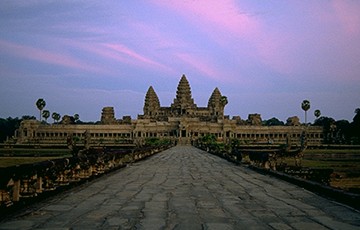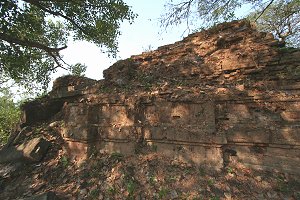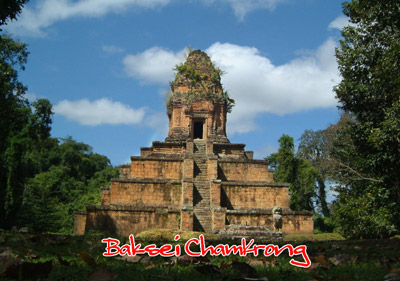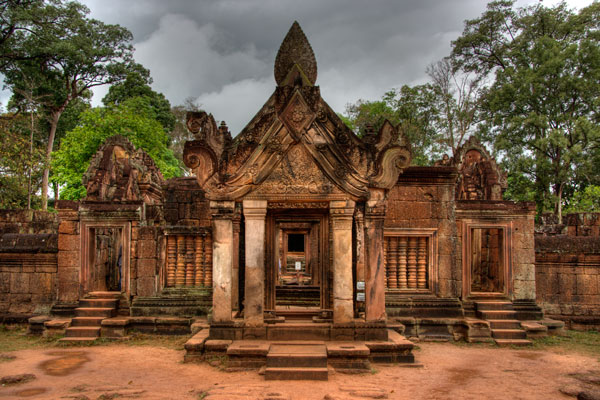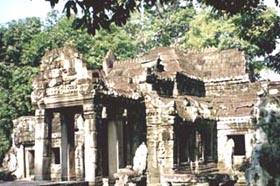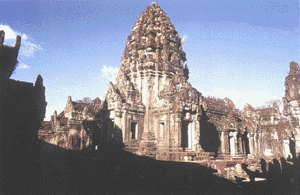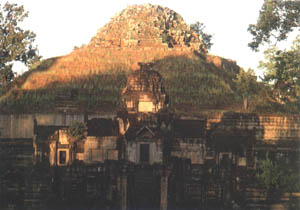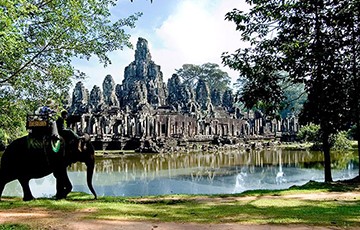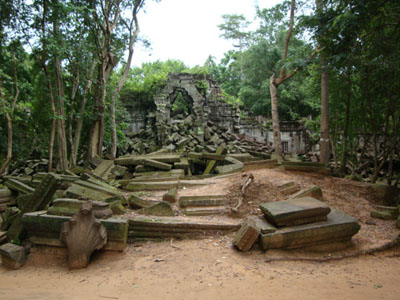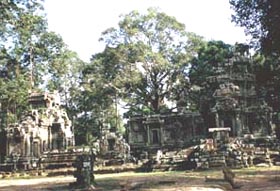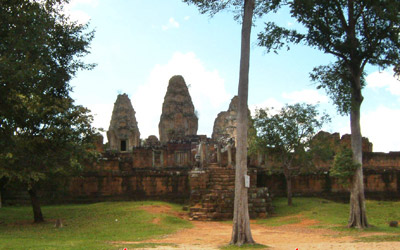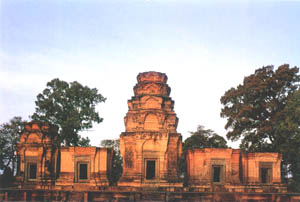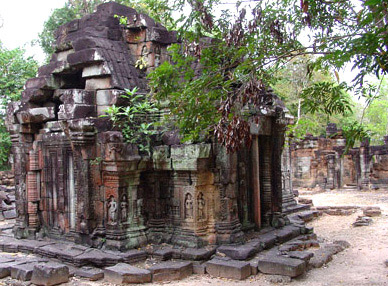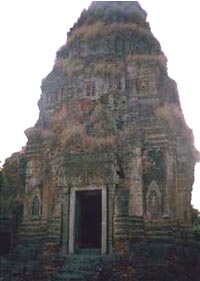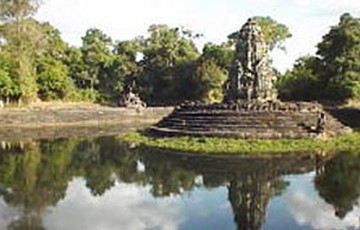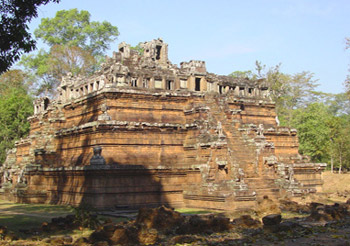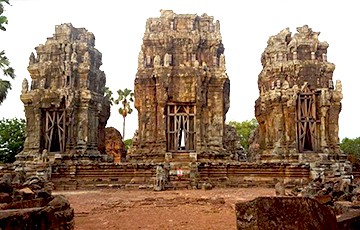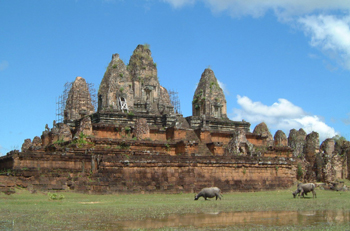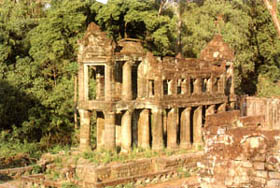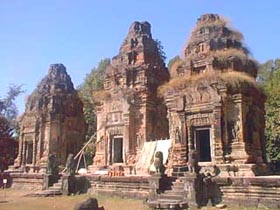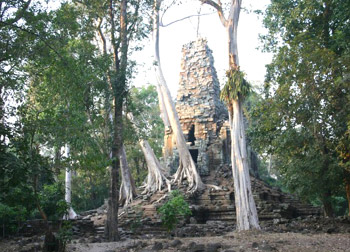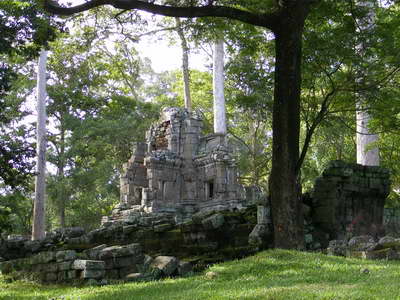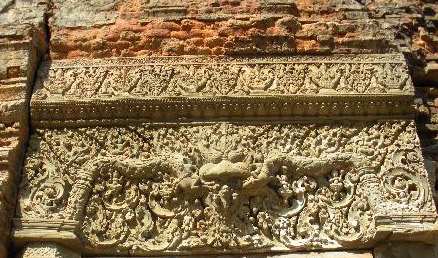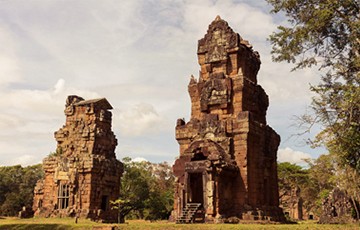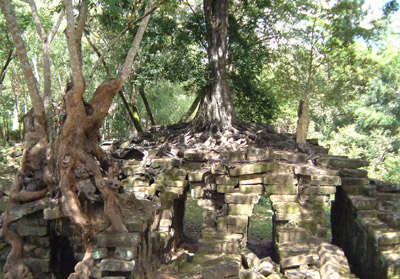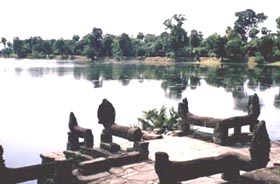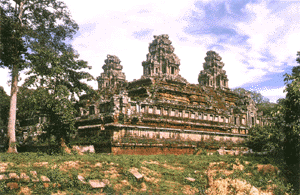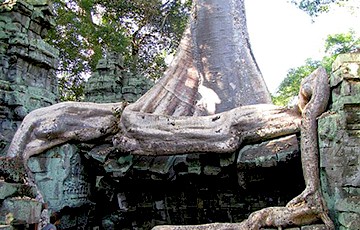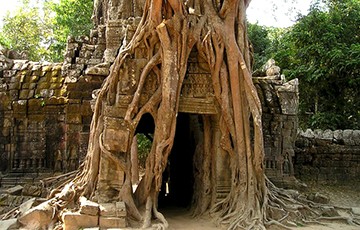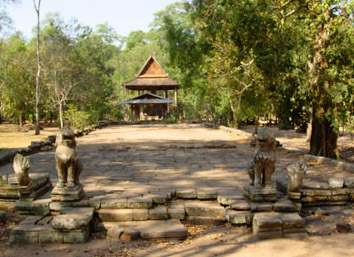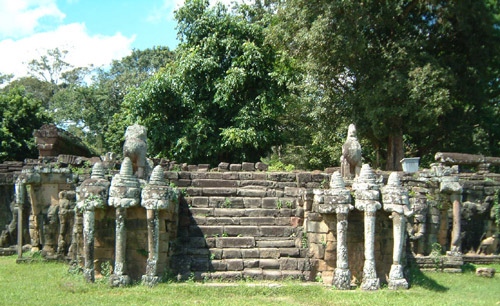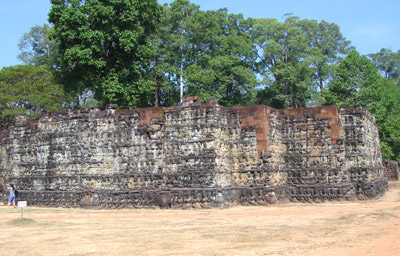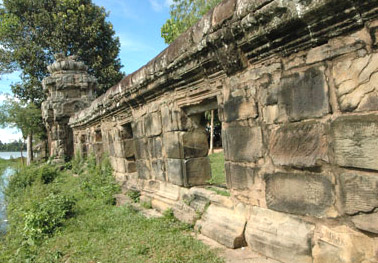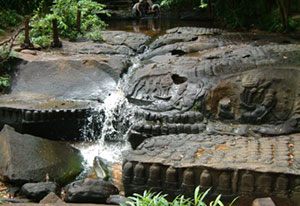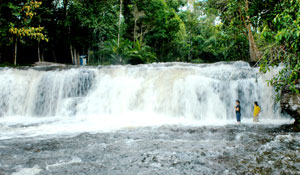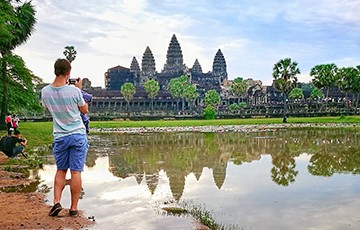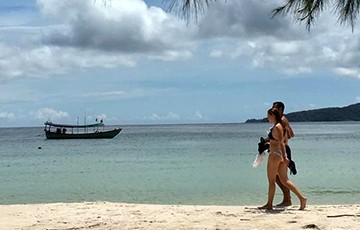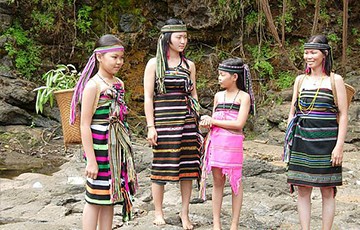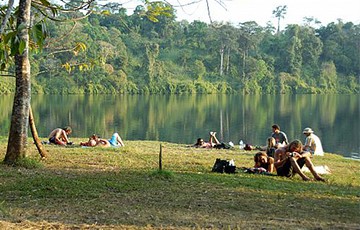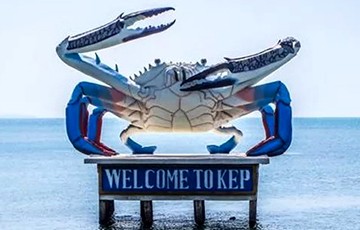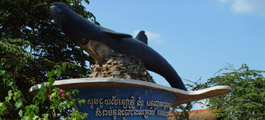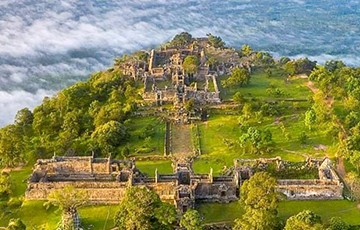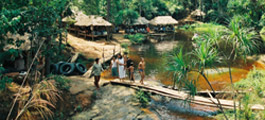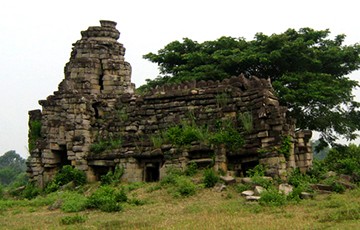Prasat Bakong
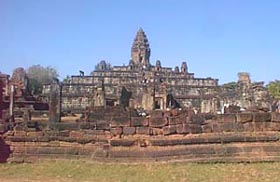 Bakong is located at Roluos south of Preah Ko. Enter and leave the temple at the east. A modern Buddhist temple is situated to the right of the east entrance to Bakong. It was build in late ninth century (881) by king Indravarman I dedicated to Siva (Hindu) followed Prah Ko art style.
Bakong is located at Roluos south of Preah Ko. Enter and leave the temple at the east. A modern Buddhist temple is situated to the right of the east entrance to Bakong. It was build in late ninth century (881) by king Indravarman I dedicated to Siva (Hindu) followed Prah Ko art style.
BACKGROUND
Bakong was the center of the town of Hariharalaya, a name derived from the god Hari-Hara; a synthesis of Siva and Visnu. It is a temple representing the cosmic Mount Meru.
Four levels leading to the Central Sanctuary correspond to the worlds of mythical beings (Nagas, Garudas, Raksasas and Yaksas).
LAYOUT
The temple of Bakong is built on an artificial mountain and enclosed in a rectangular area by two walls. It has a square base with five tiers. The first, or outside, enclosure (not on the plan) (900 by 700 meters, 2,953 by 2,297 feet) surrounds a moat with an embankment and causeways on four sides, which are bordered by low Naga balustrades.
The second and smaller enclosure has an entry tower of sandstone and laterite in the center of each side of the wall. There were originally 22 towers inside the first enclosures. After passing through the entry tower at the east one comes to a long causeway decorated with large seven-headed serpents across a moat. Long halls on each side lie parallel to the eastern wall. They were probably rest houses for visitors.
Two square-shaped brick building at the northeast and southeast corners are identified by rows of circular holes and an opening to the west. The vents in the chimneys suggest these buildings served as crematoriums. There was originally a single building of this type at the northwest and southwest corners but today they are completely ruined.
On each side of the causeway just beyond the halls there are two square structures with four doors. The inscription of the temple was found in the one on the right.
Further along the causeway, there are two long sandstone buildings (7) on each side, which open to the causeway. These may have been storehouses or libraries. To the north and south of the storehouses receptively there is a square brick sanctuary tower (8). There are two more on each side of the central platform, making a total of eight. Decoration on the towers is in brick with a heavy coating of stucco. The towers, with one door opening to the east and three false doors, have a stairway on each side, which is decorated with crouching lions at the base. The two to the east of the central platform have a unique feature, a double sandstone base, The door entrance and the false doors were uniformly cut from a single block of sandstone, The decoration on the false doors is exceptionally fine, especially that on the tower on the right in the front row, the false door of which has remarkable Kala handles. The corners of the towers are decorated with female and male guardians in niches.
Tip: the lintels of the west towers are in the best condition. A long building with a gallery and a porch opening to the north (9) is situated close to the western wall (on the left); it is mostly demolished.
CENTRAL AREA (BASE AND TOWERS)
The square-shaped base (10) has five tiers with a stairway on each of the four sides and, at the base, a step in the shape of a moonstone. Remains of a small structure can be seen at the base of the stairway fairway flanked by two sandstone blocks, which may have held sculpted figures.
Elephants successively smaller in size stand at the corners of the first three tiers of the base. The fourth tier is identified by twelve small sandstone towers, each of which originally contained a linga. The fifth tier is framed by a molding decorated with a frieze of figures (barely visible) the ones on the south side are in the best condition.
CENTRAL SANCTUARRY
The Central Sanctuary (11) is visible from each of the five levels because of the unusual width of the tiers. The sanctuary is square with four tiers and a lotus-shaped top. Only the base of the original Central Sanctuary remains. The rest was constructed at a later date, perhaps during the twelfth century.
PRASAT LOLEI
Lolei is at Roluos, north of Bakong. A modern Buddhist temple is located in the grounds of Lolei near the central towers.Enter and leave the temple by the stairs at the east.
Date: End of the ninth century (893)
Religion: Transitional between Prah Ko and Bakheng
BACKGROUND
Although Lolei is small it is worth a visit for its carvings and inscription. The temple of Lolei originally formed an island in the middle of a Baray (3,800 by 800 meters, 12,467 by 2,625 feet), now dry. According to an inscription found at the temple the water in this pond was for use at the capital of Hariralaya and for irrigating the plains in the area.
LAYOUT
The layout consists of two tiers with laterite enclosing walls and stairway to the upper level in the center of each side. Lions on the landings os the stairways guard the temple. A sandstone channel in the shape of a cross situated in the center of the four towers on the upper terrace is an unusual feature, the channels extend in the cardinal directions from a square pedestal for a linga. It is speculated the holy water poured over the linga flowed in the channels.
CENTRAL SANCTUARIES
Four brick tower with tiered upper portions, arranged in two rows, on the upper terrace make up the Central Sanctuaries. As the two-north towers are aligned on the east-west axis, it is possible the original plan had six towers, which probably shared a common base like that at Prah Ko.
Tip: The northeast tower is the best preserved. The entrances of the doors to the towers are cut from a single block of stone, as at Bakong.
The corners of the towers on the east are decorated with male guardians holding tridents and those of the west with female divinities holding flywhisks. They are sculpted in sandstone with a brick casing. The panels of the false doors have multiple figures. The inscriptions on the doorframes are exceptionally fine.
The workmanship on the lintels is skilled and the composition balanced. Some noteworthy depictions are: Indra on an elephant with figures and Makaras spewing serpents (northeast tower); Visnu riding a Garuda with a branch of serpents (south-east tower).




